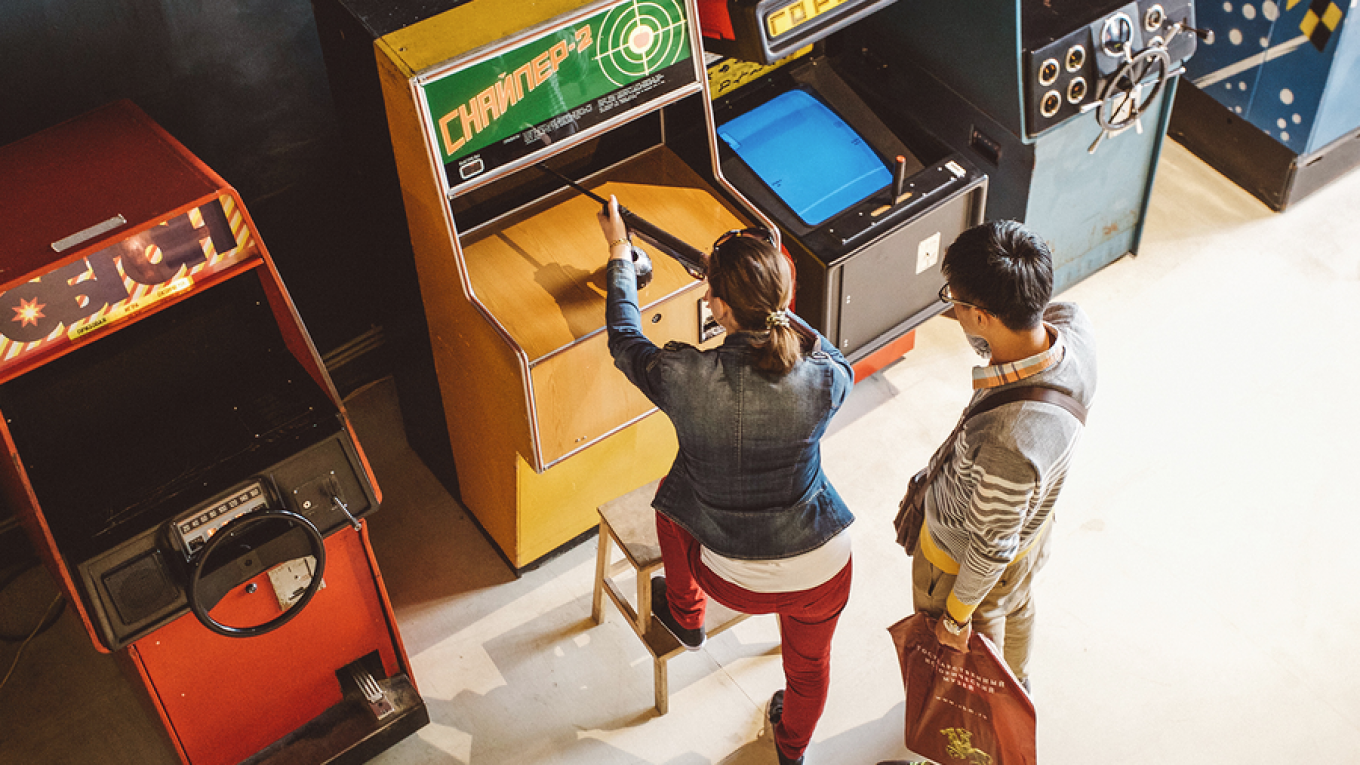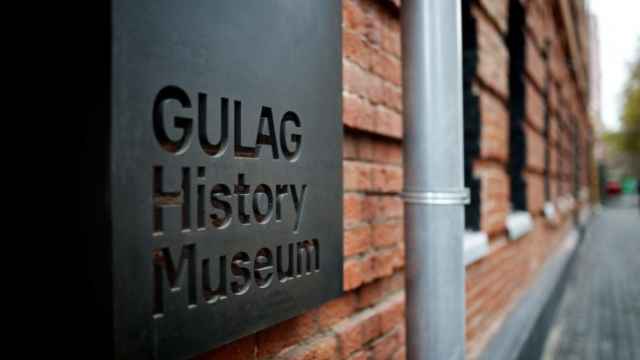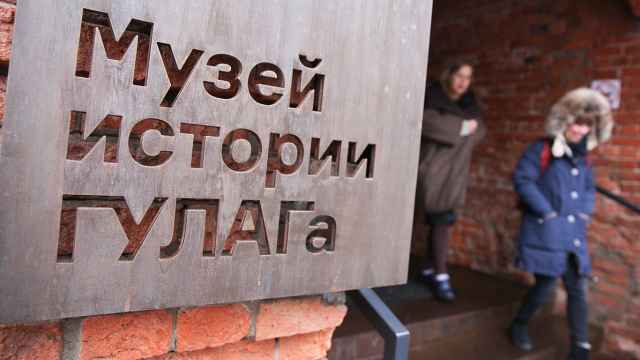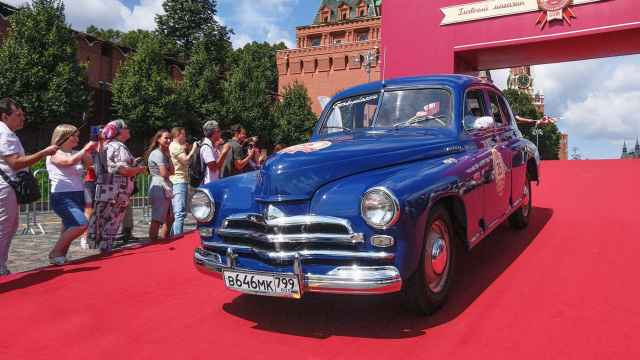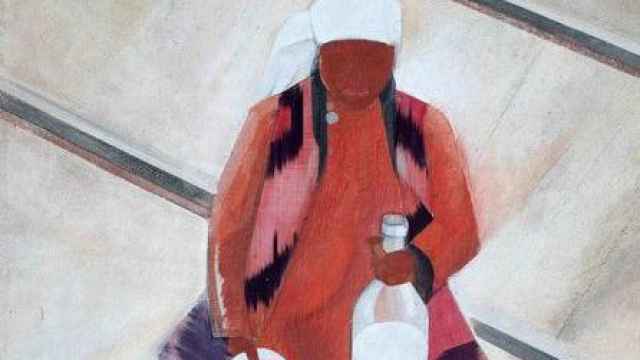In a fortified nuclear bunker, sixty-five meters below Moscow, a man sits transfixed by a computer console. Its green text informs him of an impending threat. “On my command, turn the key and prime the weapon,” the man behind him barks with the melodrama of a Bond villain. He reaches across the mass of buttons and levers in front of him and turns the key. A countdown begins.
“When the timer reaches zero, turn the second key and hit the launch button!” he commands.
Three. People watch. Two. His finger hovers over the red button. One. His right hand grabs the key. Zero. A nuclear strike against the United States, sworn enemy of Lenin’s Revolution, is launched.
A Requiem for a Dream soundtrack, which echoes through the steel shell of the bunker,
brings spectators back down to reality. It
is just a game — played out in Bunker 42,
a fascinating museum and a relic of the
Cold War.
Bunker 42 is just one of a number of
venues across the capital embracing a
newfound interest in Soviet nostalgia.
More than 25 years on from the collapse of
the USSR, Russia is reestablishing its influence
on the world stage, and memories of
the Cold War hold new weight.
115172, 5th Kotelnicheski Lane. 11
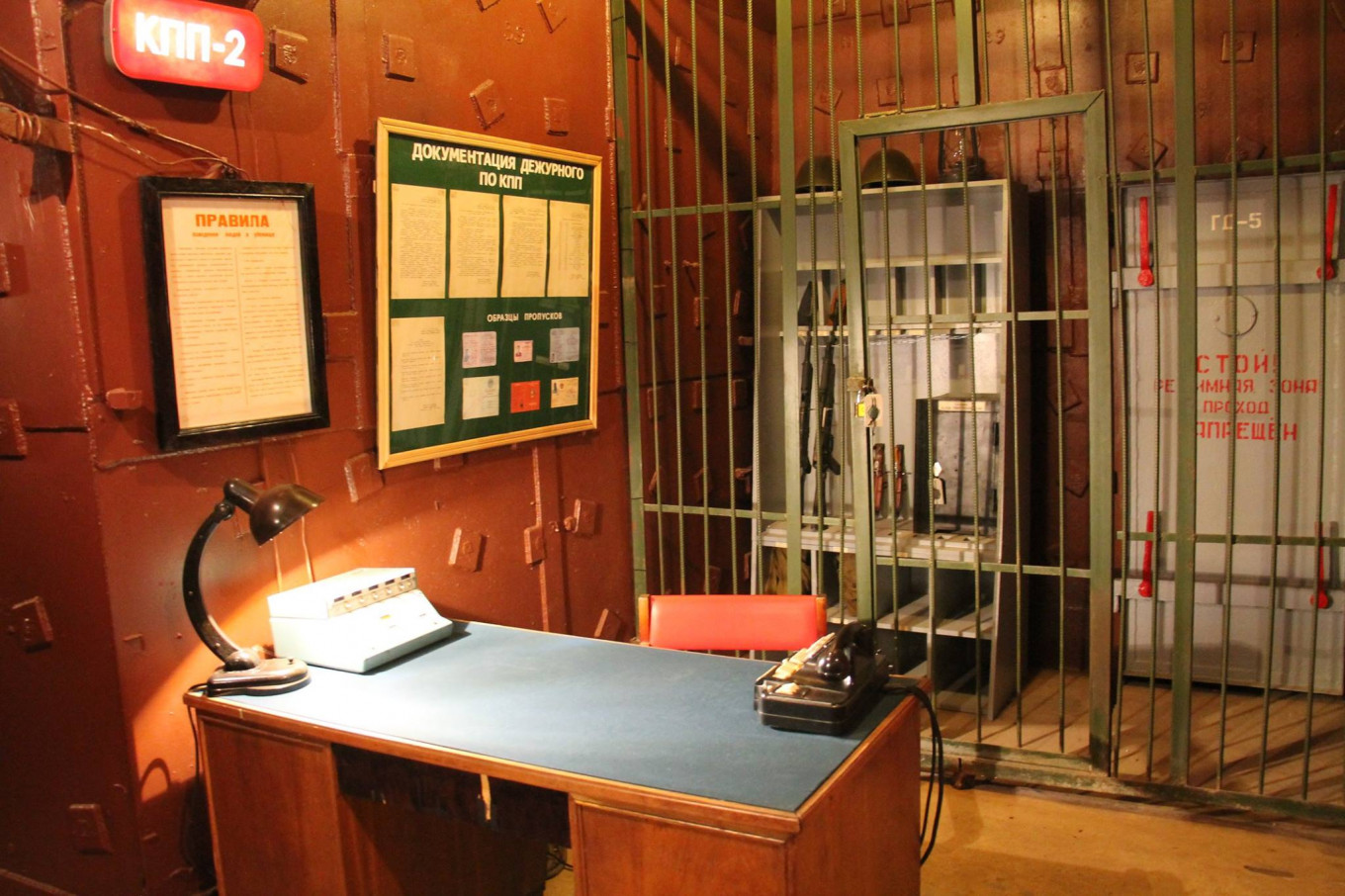
Generation Pepsi
After the collapse of the Soviet Union, social
welfare gave way to uncertainty and
predatory capitalism. Millions lost their
jobs. Hyperinflation wiped out Russians’ life savings. As
cult author Victor Pelevin put it in his novel Homo Zapanians,
Russia exchanged “an evil empire for an evil banana
republic.”
“My family and I suffered great trauma,” Olga, a 52-year-old market-stall owner near Muzeon Park, told The Moscow Times. “Our country was the most beautiful in the world, we were proud of it. Then suddenly, it was gone.”
The narratives of the older generations share a common
thread — the feeling of drifting into the unknown. And
Moscow’s Park Muzeon, or Park of the Fallen Heroes, is the
material manifestation of this drift.
Here you can find statues that were torn down during
the collapse of the USSR. Busts of Lenin are thrown around
chaotically throughout the park. A noseless Stalin watches
on. Even more controversial is the monument of Felix Dzerzhinsky, founder of the Soviet secret police. This was the
first statue to fall with the regime.
Their bold outlines, created in traditional socialist-realist
style, remind passersby of the one-time ubiquity of the Soviet state.
119049, 2 Krymskiy val. 2
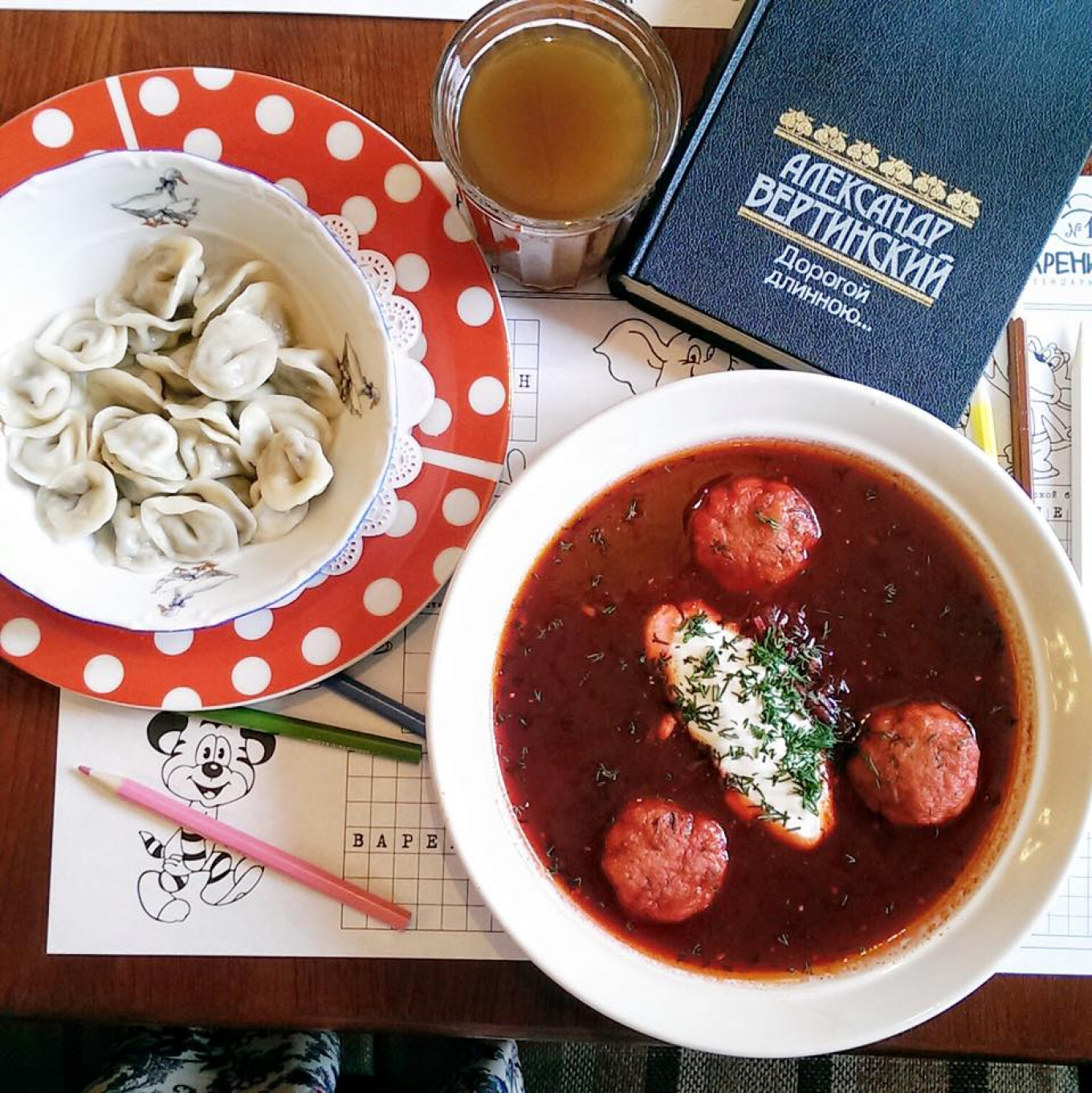
Culinary Revolution
Somewhat at odds with the values of communism, Soviet
nostalgia has also crystallised into an easily marketable
consumer brand.
The trend is visible across Moscow: from restaurants
such as Kommunalka, which borrows its interiors from
those of the USSR’s communal apartments, to the ironic
Soviet-style abbreviations used by bars such as Glavpivmag
(built from the Russian words Glavniy-pivnoy-magazin, or
main-beer-store).
The most visible display of Soviet nostalgia is arguably
GUM’s supermarket, Gastronome No.1. The store is packed with immediately recognizable
goods like the USSR’s
famed Plombir vanilla icecream,
marketed as “the
taste of childhood.” There
are strange, cone-shaped
glass containers filled with
drinkable syrup and even
chocolate flavoured butter,
a throwback to the days before
Nutella flooded Russian
kitchens.
For many, products of
the Soviet era embody a
sentiment of forgotten
quality. At a time of sanctions
and counter-sanctions,
they also cross over
into defensive feelings of
national pride.
“Food is getting better
now, and there are standards
again,” one shopper
told The Moscow Times
despite that the quality of
food in Russia has actually
diminished rapidly since a
trade embargo began in 2014.
Many of the new outlets sentimentalize the Soviet era
as a time of innocence and simplicity. These ideas, for example,
are at the heart of the Varenichnaya No.1 chain of
cafes. Old books line the shelves and wall-mounted black
and white televisions play Cold War-era movies. You can
even try traditional vareniki (dumplings) with a side order
of pickled vegetables from jars.
Occasionally, things have gone too far. In December
2016, a Moscow restaurant called NKVD — after Stalin’s
brutal secret police — opened to widespread criticism.
Many condemned the business for profiteering from the
victims of Stalin’s regime. The building of the restaurant
itself was the one-time home of 4 people later executed
during the Great Terror.
101000, Red Square. 3
Simulating
Socialism
Soviet nostalgia is not limited
to older generations.
Russia’s youth has also taken
to this bygone era. At the
Museum of Soviet Arcade
Games, for example, hip
Russian teens spend their
evenings putting Brezhnevera
coins or “commie quarters”
into game machines
produced by the Soviet government
in the late 1970s.
The Museum also offers
a trendy burger bar, 8-bit
gaming soundtracks, and a
gray, hard-edged soda machine
from the early 1980s.
One of the most popular
games in the arcade is Repka
(Radish). This is a test of
strength that requires the
player to pull on a lever as
hard as they can in order to pull a radish out of the family
garden. The game registers the number of kilos they
can pull and ranks the player accordingly. The classics are
all here too: the Soviet submarine shooter “Sea Battle,” the
World War II flight simulator “Dogfight,” and the racing
game “Magistral.” If you visit the museum’s website you
can even play their online simulations of the games and
see inside the machines to get an idea of how they work.
Unfortunately, none of the games keep high scores —
Soviet society, after all, didn’t believe in competition. But
this doesn’t seem to deter the regulars.
“It’s a cool place to hang out with your friends,” one tells
The Moscow Times. “People usually play on their laptops at
home, but this is real old school — what previous generations
did before they invented the Internet.”
Kuznetsky Most. 12
A Message from The Moscow Times:
Dear readers,
We are facing unprecedented challenges. Russia's Prosecutor General's Office has designated The Moscow Times as an "undesirable" organization, criminalizing our work and putting our staff at risk of prosecution. This follows our earlier unjust labeling as a "foreign agent."
These actions are direct attempts to silence independent journalism in Russia. The authorities claim our work "discredits the decisions of the Russian leadership." We see things differently: we strive to provide accurate, unbiased reporting on Russia.
We, the journalists of The Moscow Times, refuse to be silenced. But to continue our work, we need your help.
Your support, no matter how small, makes a world of difference. If you can, please support us monthly starting from just $2. It's quick to set up, and every contribution makes a significant impact.
By supporting The Moscow Times, you're defending open, independent journalism in the face of repression. Thank you for standing with us.
Remind me later.


